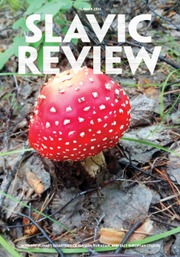Article contents
“As in the Ship of Peter”
Published online by Cambridge University Press: 27 January 2017
Extract
When Aleksandr Danilovich Menshikov, carrying out the decision of the military council Peter I had called at the time of the siege of Nienshants, placed an earthwork fortress on one of the islands of the Neva Delta, it is highly unlikely that anyone suspected what the consequences of this step would be. It was simply a timely move that made it possible to cut off the Neva’s channel by artillery fire, so that the Swedish fleet could not aid the beleaguered town by sea. The fortress proved useless in all respects: It never had occasion to beat back the enemy, whereas defending the Admiralty Wharf on the other side of the river was beyond its reach. It seemed appropriate to build another fortress around the wharf as quickly as possible. On all sides of both fortifications a small town began to spread out irregularly, and it bore the name of the tsar’s heavenly guardian, the apostle Peter.
- Type
- Articles
- Information
- Copyright
- Copyright © Association for Slavic, East European, and Eurasian Studies, Inc. 1991
References
1. Makarov, V. E., “Pervyi vid Peterburga,” Sbornik trudov Gosudarstvennoi Publichnoi biblioteka, Vyp. 2. (Leningrad, 1954), 161–162 Google Scholar.
2. Libtal, E. E.,’, Luppov, S. P., “Opisanie . . . stolichnogo goroda Sankt Peterburga: 1716-1717” (trans, from German), in Belye nochi 4 (Leningrad, 1975), 197–247 Google Scholar.
3. Kornelova, G.N., “‘Panorama Peterburga,’ graviura raboty A. F. Zubová,” in Kul’tura i iskusstvo Petrovskogo vremeni (Leningrad, 1977), 111–138 Google Scholar.
4. Matveeva, T. M., Ubranstvo russkikh korablei (Leningrad, 1979), 45.Google Scholar The deisusnyi icon on the iconostasis represented the Mother of God, the Savior, and John the Baptist.
5. Matveev, V. Iu., “K istorii vozniknoveniia i razvitiia siuzheta ‘Petr I, vysekaiushchii statuiu Rossii,’” in Kul’tura i iskusstvo Rossii XVIII veka. Novye materiály i issledovaniia (Leningrad, 1981)Google Scholar.
6. Vilinbakhov, G. V., “Otrazhenie idei absoliutizma v simvolike petrovskikh znamen,” Kultura i iskusstvo, 14–21 Google Scholar.
7. Prokopovich, Feofan, “Slovo v nedeliu osmuiunadesiať, skazannoe v Sankt Piterburkhe,” Soch-ineniia (Moscow-Leningrad, 1961), 63 Google Scholar.
8. “Slovo v pokhvalu Sanktpeterburga i ego osnovatelia, -Gosudaría Imperatora Petra Velikago, govorennoe pred litsom sego monarkha, Perosviashchennym Gavriilom Buzhinskim, Episkopom Riazanskim i Muromskim, byvshim togda Prefektom i Ober-Ieromonakhom flota, pri podnesenu Ego Velichestvu pervovyrezannogo na medi plana i fasada Peterburgu,” Starina i novizna sostoiashchaia iz sochinenii i perevodov prozaicheskikh i stikhotvomykh, izdavaemaia pochastno. Chasť I. V Sanktpeterburge 1772 goda, 72.
- 2
- Cited by


